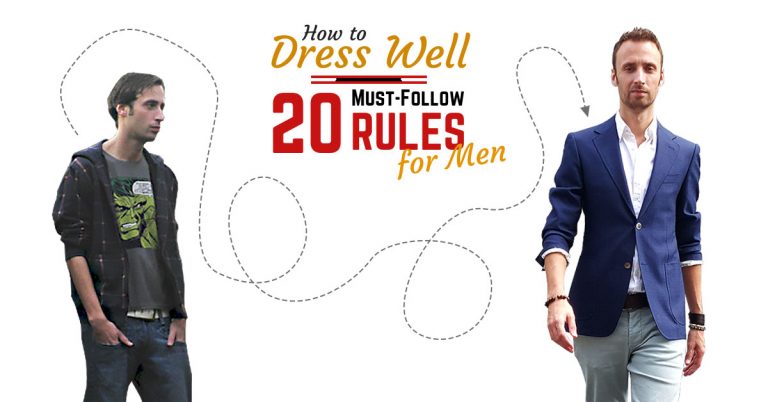How Should a Dress Shirt Fit? Your 10-Step Checklist
If you want your shirt to look good on you, then you have to know how a dress shirt should fit.
Getting the fit right is critical.
Without the right fit, you can get everything else right, but you’ll still look like crap wearing it. Without the right fit, you got nothing.
So how should a dress shirt fit? Do you know how to check?
The information you can get about it is often vague, it can leave you with questions, and it often comes without visuals.
Well, today I’ll give you a sample from my e-book — Style Made Simple — that will show you ten different ways to check if your shirt has the right fit, so you never have to wonder again.
The Difference Fit Makes
I can keep telling you how important it is to wear fitting clothes, but I thought pictures would tell it better.
Just look at the difference between these shirts fit, worn untucked and worn tucked. You’ll see the difference between a dress shirt in the right fit and when a dress shirt’s too big.

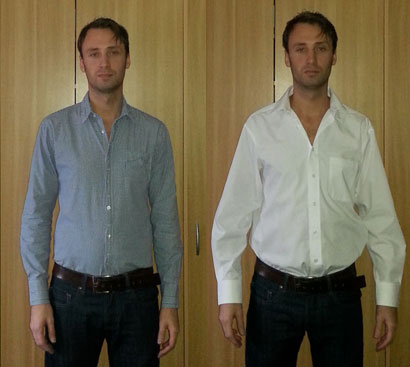 Shirts like the white one are only useful when your girlfriend’s into pirate role-play.
Shirts like the white one are only useful when your girlfriend’s into pirate role-play.Now, you may think the white shirt’s fit is an extreme example of bad fit, but you’d be surprised how many guys are walking around in similarly ill-fitting clothes.
Hopefully that doesn’t include you. But if it does, we’ll fix that today.
The Perfect Fit for Dress Shirts
Before we move on, you need to know that off-the-rack shirts are nearly impossible to find in your perfect fit. Something will always be off.
When the sleeves are perfect, the waist is too baggy. When the waist is perfect, the chest is too tight. When the chest is perfect, the sleeves are too long.
You should count on something always being off. Because otherwise you’ll end up wasting too much time trying to find that perfect-fitting shirt. And you’ll still be unlikely to find it.
So, How Do You Get the Perfect Fit for a Shirt?
You need to ensure the shirt fits in three key areas — chest, shoulders and neck — and then try to get as much right as possible.
The rest of your shirt can be easily altered by a tailor, and won’t cost so much. But your chest and shoulders are mostly unalterable. And collars can be altered, but it’s hard to do without ruining the shirt, and thus costs more.
“But can’t I just use the money to buy another shirt?”
Yeah, you can. But like I said, perfect fit is nearly impossible to find. So if you use the money to buy another gorgeous business casual shirt instead, you’ll just end up with two ill-fitting shirts instead of one that does fit.
And if that still sounds like a better deal, then you need to cram this into your head:
One shirt that fits is worth ten that do not.
Ill-fitting shirts are worthless. They’re garbage.
You’re not getting two shirts for the same price as getting one and having it tailored. You’re getting two pieces of crap.
They’re not worth the money, unless you get them fixed.
And if you find a shirt that fits everywhere, except the waist or sleeves, then getting those altered can be done for a very fair price.
Shirt Fitting Guide: How Should a Dress Shirt Fit?
So when you’re in the store, trying your shirt on, what do you look for? How do you determine the shirt is worth your money?
The checklist below will show you how to tell if a shirt is too small or too large.
Here’s what you do:
1. Check the shoulder seams first.
They should rest at the edge of your shoulders. Not on top, and not over them.
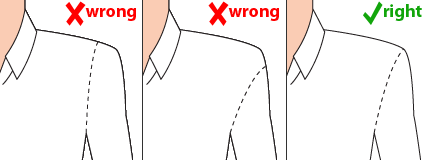
2. Check the buttons
Are the buttons pulling at the fabric to try and reach each other?
Is the fabric of your shirt coming apart between the buttons?
Bad sign! Your shirt’s too tight.
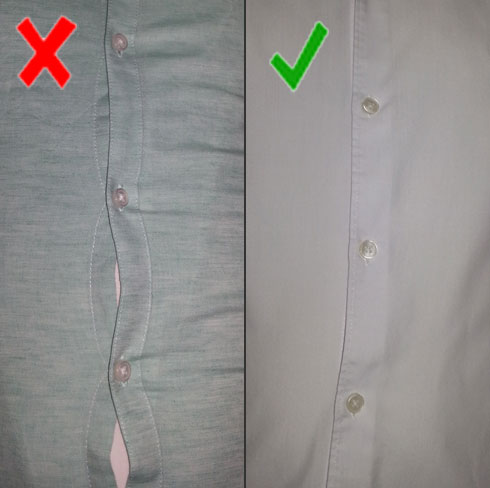
3. Put two fingers between your neck and your collar
If you can’t fit two, the collar is too tight. If you can fit more than two, your collar’s too large.
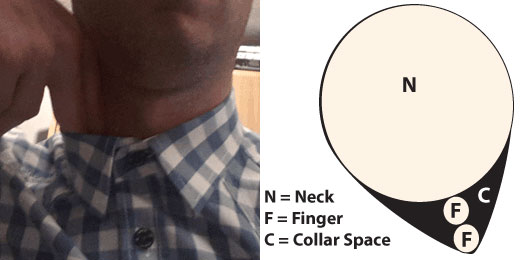
4. Hold up your left arm, and pinch the fabric together at your sides
You should be able to pinch around 2-3 inches. Any more than that, and it’s too large. Any less and it’s too tight.
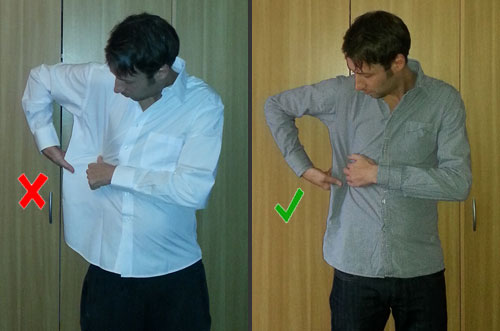
5. Feel how much room you have in the sleeves
Are your dress shirt sleeves too baggy? You don’t want to have too much excess fabric in your sleeves. They should be tight, but not too tight. You should be able to bend your arm without feeling the fabric stretch. Armholes should be as high as possible without restricting movement.
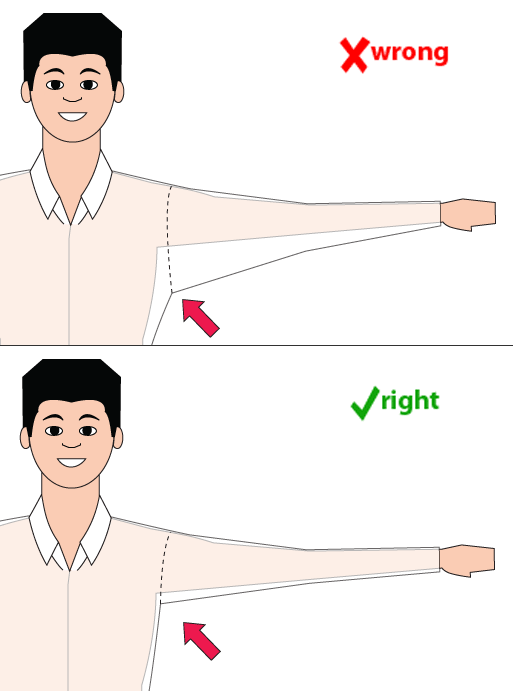
6. Check your dress shirt’s sleeve length when you let your arms hang by your sides
How long should your sleeves be?
Sleeves should end by your thumb dimple. If you don’t understand where your dimple is, glide your finger across the side of your wrist, and feel for an indent.
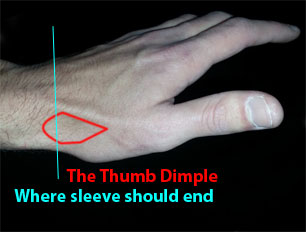

7. Raise your arms in front of you
If you feel the fabric stretch in the back, the shirt is too tight.
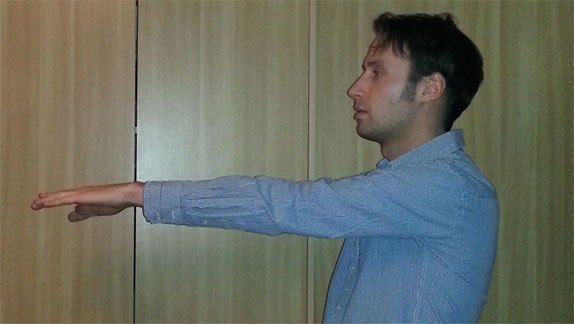
8. If you plan on wearing your shirt tucked (some or all of the time), tuck it in when trying it on. Raise your hands above your head and see if it stays tucked

9. Pretend to tie your shoelaces, and see if the shirt stays tucked
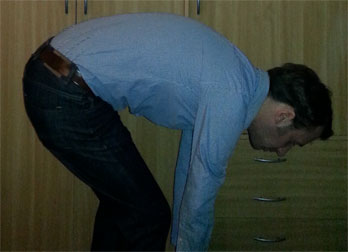
10. If you plan on wearing the shirt untucked, raise your arms and make sure none of your belly is exposed
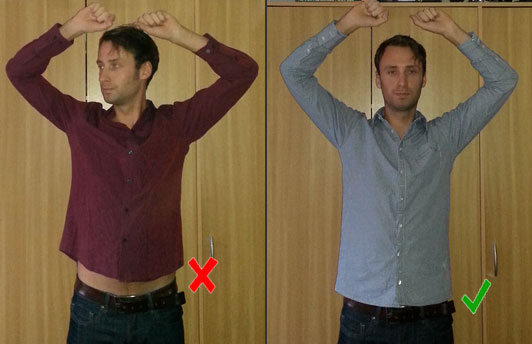
Side-note: You can perform these checks at the tailor too, before he gets to work on your shirt, and make sure he doesn’t make it too tight.
Now Go Find Some Well-Fitting Shirts
You now know how dress shirts should fit, so go get some. And don’t forget to check the shoulders, chest and neck first.
And, before you go on a shirt shopping-spree, check your wardrobe. Maybe you already have a few shirts that fit in the key areas, and you can get them tailored into perfection.
Wearing a great-fitting shirt will make you look and feel so much better. You won’t even believe what wonders it does for your confidence.
Prepare for many compliments.
And if you’re interested in getting more advice like this, then you want to get on the launch list of my upcoming e-book: Style Made Simple. Sign up below for more information and more free samples.
Did You Find That Useful? Then Check This Out…
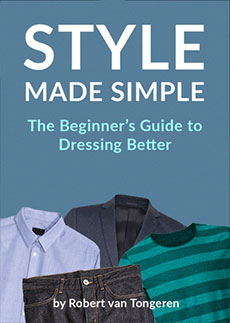
I wrote a men’s style guide that simplifies the art of dressing well, focuses on what matters, and takes you through it one step at a time. Enter your e-mail below and you’ll receive three free chapters, which will show you:

